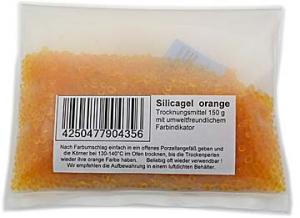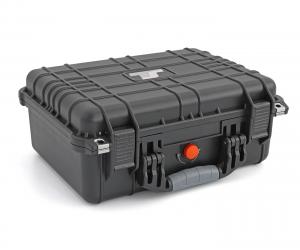- Telescopes
- Overview:
Telescopes - Achromatic Refractor
- Apochromatic Refractor
- Overview:
Apochromatic Refractor - ED Refractor - less color aberration than an achromatic
- SD APO - color free 2-element APO objective
- EDT APO - 3 element ED objective
- High End APO with 3-element APO objective - no color aberation
- Flatfield APO with flat field for Astrophotography
- All Apos and EDs from all manufacturers - large overview
- TS APO and ED from Japan with high quality optics
- Overview:
- Newtonian Telescopes
- Dobsonian Telescopes
- RC Ritchey Chretien Telescopes
- Casssegrain Telescopes
- Reflektor Telescopce with Lens Correcture
- Maksutov Cassegrain Telescopes
- GoTo Telescopes
- Solar Telescopes H-Alpha
- Overview:
- Mounts Tripods Rings Rails Power Supply ...
- Overview:
Mounts Tripods Rings Rails Power Supply ... - Mounts Equatorial with GoTo
- Mounts Equatorial without GoTo
- Mounts Azimutal with GoTo
- Mounts Azimutal without GoTo
- Mounts GoTo - Harmonic Drive
- Travel mounts for astro imaging
- Tripods Piers Polar Wedges
- Mount Control & Electronics
- Dovetail Clamps, Plates and Mount Adapters
- Tube Rings
- Power Supply
- Counterweights Balance Weights
- Mount Accessories - Other
- Overview:
- Telescope Accessories
- Overview:
Telescope Accessories - Eyepieces
- Barlows & Reducer Lenses
- Diagonal Mirrors and Prisms
- Binocular Viewers
- Finder Scopes
- Telescope Collimation and Test
- Cleaning Tools
- Transport and Storage
- Dust protection for Telescopes & Accessories
- Stray Light Protection
- Dewcaps and Heater
- Focusers, Adapters, Motorfocus
- Telescope DIY & Improvement
- Other telescope accessories
- Replacement Parts
- Overview:
- Filters
- Overview:
Filters - Color Filters and Color Filtersets
- Nebular Filters for Visual Observing
- Neutral-Density and Polfilter
- Photo Narrowband Nebular Filters
- Photo Broadband Filters
- Photo Planetary Filters
- Photo R-G-B and IR Cut Filters
- Photo - Filtersets
- Photometric Filters
- Clip Filter for DSLR Cameras
- Filter Wheels and Filterslider
- Solar Filters for white light
- Solarfilter for H-Alpha and Calcium
- Overview:
- Adaptors
- Overview:
Adaptors - Adapter 1,25" and 24,5mm
- Adapter 2"
- Adapter T2 - M42x0.75
- Adapter M48x0,75
- Adapter M54
- Adapter SC
- Adapter M63
- Adapter M68
- Adapter to other Threads
- Adapter Extensions
- Adapter camera bayonet
- Adapter Objective Filterthread
- Adapter Quick Changing , Rotation
- Adapter Eyepiece Projection
- Adapters Tilting
- Overview:
- Astrophotography and Photography
- Overview:
Astrophotography and Photography - Cooled Cameras
- Cameras without Cooling
- Deep-Sky Cameras uncooled
- Set-Offers Camera, Filter, Wheels
- Acessories for Cameras
- Travel mounts for astro imaging
- Imaging Correctors for Telescopes
- Autoguiding Cameras & Sets
- Everything for Guiding
- Focusing aids - Bahtinov mascs
- Flat Field foils and boxes
- Lenses for Cameras
- Piggyback Camera Holder
- Camera Bags, Photocases & more
- Digital Camera and Smartphone Adapter
- Other photo accessories
- Overview:
- Binoculars, Spotting Scopes, Microscopes, Range Finders
- Overview:
Binoculars, Spotting Scopes, Microscopes, Range Finders - Spotting Scopes and Acessories
- Roof Prism Binoculars
- Binoculars with Porro prisms
- Binoculars from 100mm Aperture
- Binoculars with 1,25 inch eyepieces
- TSMX APO Binoculars
- Binoculars for Astronomy
- Binoculars Hiking Bird watching
- Monoculars - Opera Binoculars
- Accessories for Binoculars
- Range Finders
- Microscopy
- Bags for Phototripods & Binoculars
- Overview:
- Phototripods and Binomounts
- Books, Software
- Overview:
Books, Software - Books for Astronomy Beginners
- Star Charts and Planispheres
- Books about our Solar System
- Observing Tips for Amateurs
- Popular Astronomy Literature
- Teaching material
- Astrophotography books
- Telescopes, Observatories, Construction
- Calendars Yearbooks
- Software, Star Charts
- Books for Microscopers
- Books Nature and Animals
- Nature Photography TimeLapse
- Overview:
- Night Vision, Magnifiers, Weather, Domes & more
- Beginner Astronomy and Gift Ideas
- Second Hand & Special Offers
- New products
Manufacturer: Finger Lakes
Product number: ML16200 G2
EUR8949.00new
EUR 8.949,00
incl. 19 % VAT (DE)
The VAT indicated refers to that applicable in Germany. After logging in, the VAT amount is adjusted to the applicable VAT of the stored delivery country. Therefore, the final price may vary accordingly.
excl. 6.95 € shipping costs (DE)
more details to the shipping costs ...Please log in to calculate shipping costs to your country.
There are no reviews for this product
- Details..
- Technical data..
- In the box..
- Reviews..
- Manufacturer infos..
- Safety informations..
Finger Lakes KAF-16200 Monochrome CCD Camera (Grade 2) with 43 mm shutter
The MicroLine is a small camera with big camera capabilities. Here, you can find a sensor in APS-H format, supplied by ON Semiconductor.The special features of this camera:
High number of pixels and large sensor dimensions allow for a wide image field and a high detail resolution at the same time, the powerful cooling results in a low-noise image.
The manufacturer
Finger Lakes Instrumentation egan operations in 1998 as a supplier of cooled CCD cameras for astronomical research, so their products profit from excellent knowledge about what is needed. But the cameras are also used in industrial applications, which results in even more demanding specifications.
Difference Sensor Grade 1 and Grade 2
In general, the results will not differ after subtraction of the darks and bias. The defects (hot pixels, clusters, ...) can be removed by suitable "darks".Grade 1:
Grade 2:
Good storage is an important preventive measure against dew and also extends the service life
After use, put the camera straight into the TS Protect Case and add some silica gel. During storage, the silica gel absorbs the moisture from the camera. At the same time, the penetration of moist room air is prevented. Dry storage can even partially regenerate the small desiccant tablets in cooled cameras. Your camera or accessories are always ready for you in optimum condition. You can find the silica gel and the case in our product recommendations.The cameras are not airtight, so if the camera remains on the telescope, it is exposed to moisture. The small amount of desiccant in the camera can protect the sensor and the inside of the protective glass from moisture for the duration of the exposure, but not for days on end. Moisture problems can be the result. A simple trick is to stretch a plastic bag around the focuser to which the camera is attached so that no air can get in. Silica gel is placed in a small cloth bag inside the plastic bag. This will also create a "dry climate zone" for the camera on the telescope. This allows you to leave the camera on the telescope for a few days for an imaging session lasting several days.
In the medium and long term, however, this is no substitute for proper storage in an airtight case with silica gel.
Astrophotographic results obtained with this camera on Astrobin
Here you can find some astrophotographs made with this camera model: Link to Astrobin| Camera type: | Monochrome CCD camera |
| Sensor: | KAF-16200 Grade 2 - 27 x 21.6 mm - diameter 34.5 mm |
| Pixels: | 16.2 MPx - 4500 x 3600 Pixels |
| Pixel size: | 6 µm |
| Quantum efficiency: | up to approx. 60% |
| Data resolution: | 16 bit |
| Interface: | USB 2.0 |
| Full well capacity: | 39000 e- |
| Read Noise: | max. 11 e- RMS |
| ABG: | 2000x saturation exposure |
| Cooling: | Peltier, up to 55 °C below ambient |
| Shutter: | 43 mm diameter, times beginning with 200 ms |
| Power supply: | 12 V power supply included |
| Power consumption: | max 4.3 A for a longer time, shutter opens with 4 A pulse |
| Telescope connection: | optionally selectable |
| Working distance: | 15.7 mm from faceplate to sensor |
| Dimensions: | 94 x 94 mm (3.7" x 3.7"), 121.3 mm (4.77") long |
| Weight: | 1.2 kg (3.0 lbs) |
Astrophotographic results obtained with this camera on Astrobin
Here you can find some astrophotographs made with this camera model: Link to Astrobin| Manufacturer / Importeur: | Teleskop-Service Ransburg GmbH |
| Street: | Von-Myra-Str. 8 |
| ZIP / City: | 85599 Parsdorf |
| Country: | Germany |
| Telefon number: | +49 89 99228750 |
| Email: | info@teleskop-service.de |
| Website: | www.teleskop-service.de |
Safety informations: PDF Download
Recommended accessories
Customers who bought this product also bought...
Transport & Covers
TS-Optics Protect Case waterproof hard case - width 407 mm
EUR 54,90RRP EUR 69,00you save 20.4% (EUR 14,10)
Reviews

















